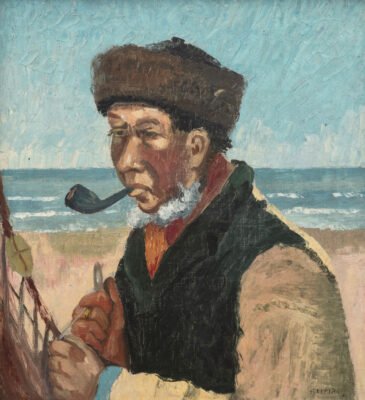
Due to the inherent anonymity of Alcoholics Anonymous (AA) and a host of other 12-step programs that specialize in different forms of recovery, statistics on their scope are somewhat elusive; AA reports worldwide membership within some 180 countries, and more than 123,000 individual AA groups. While AA itself is a relatively young institution, approaching a mere 90 years since its founding in Ohio, healing and recovery from addiction is a concept with origins in the oldest of human societies. Scholar and psychotherapist Kikan Massara’s The 12 Steps: Symbols, Myths, and Archetypes of Recovery (Taschen, June 2024) examines ideas about addiction and its treatment in art from ancient to contemporary times, all through the specific lens developed by Alcoholics Anonymous and its associated literature.
The core of this parlance is, of course, the eponymous 12 steps in the book’s title. A section of the book breaks down each step into its core principle, and then illustrates it through works of art and literature. Step One, summarized as “Admit Powerlessness,” is paired with “Despair” (1894) by Edvard Munch, “Snow Storm – Steam-Boat off a Harbour’s Mouth” (1842) by J. M. W. Turner, “Sueño” (1992) by Kiki Smith, and even a Ptolemaic relief dating to 332 BCE from the Temple of Haroeris and Sobek in the Nile Valley of Egypt. Each captures the devastation, confusion, and tumult of a losing battle with alcoholism and other related diseases — one that drives millions of people to reach out for help.


In addition to this detailed look at step-work in art history form, the book explores other tools of psychological and physical recovery, such as psychologist Carl Jung’s notions of connection, powerlessness, and the “shadow self”; transformation myths including the hero’s journey; and portals for expanded consciousness like sacred trance, divine ecstasy, and what Massara refers to as “the dark night of the soul.” The so-called “Flammarion Engraving” is an unattributed woodcut image of a pilgrim-traveler piercing the veil of the heavens to witness the underlying mechanics of the universe, first appearing in astronomer Camille Flammarion’s 1888 publication L’atmosphère: météorologie populaire (The Atmosphere: Popular Meteorology). This work demonstrates that addiction is not the only characteristic that has plagued humanity since its inception and healing from its devastating effects leverages another natural human tendency: the curiosity to transcend daily reality and glimpse what higher power might govern life as we know it.

Whether as a companion reading for art lovers in recovery communities or a fascinating view of the art history of addiction and healing, The 12 Steps offers a wealth of information and insight into an often-taboo subject. Ultimately, it encapsulates one of AA’s most redeeming notions: that even the depths of addiction can be transformed, through sharing and connection, into worthwhile points of inspiration for ourselves and one another.







